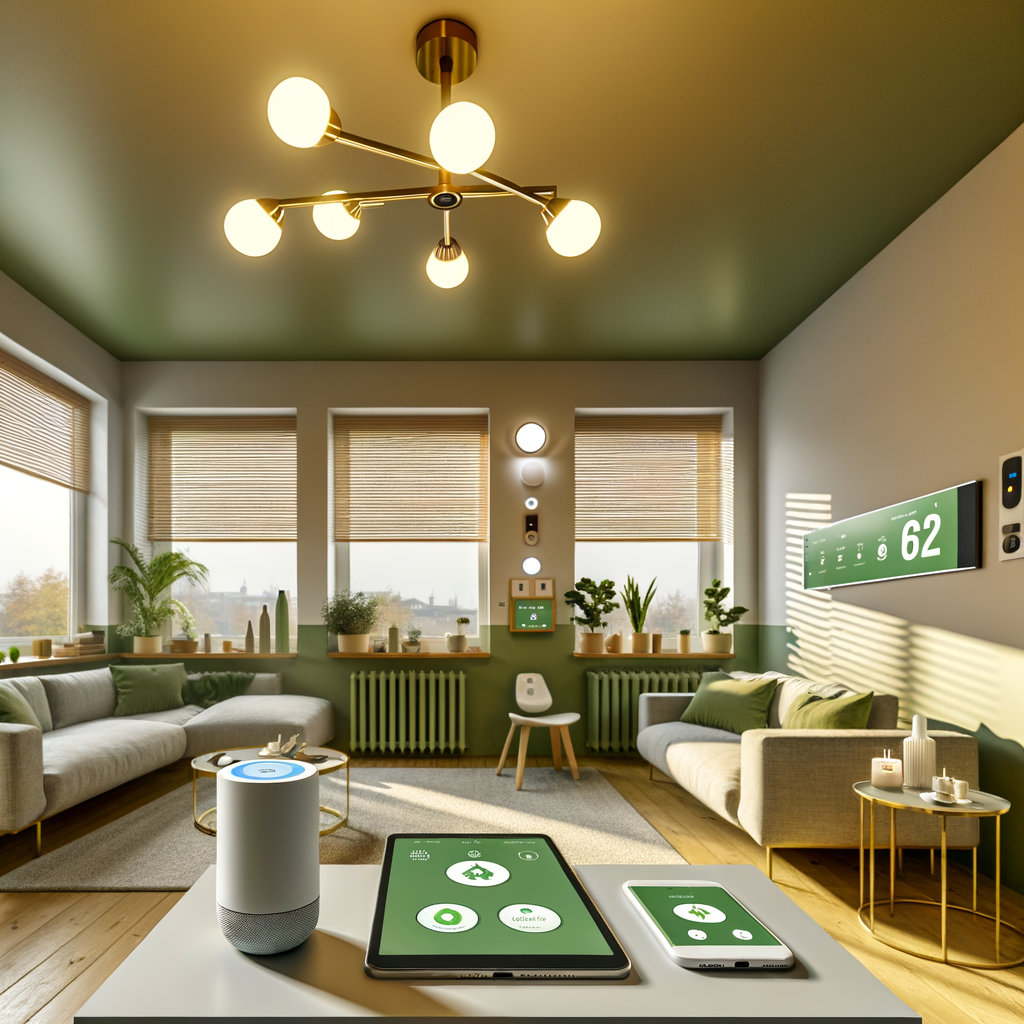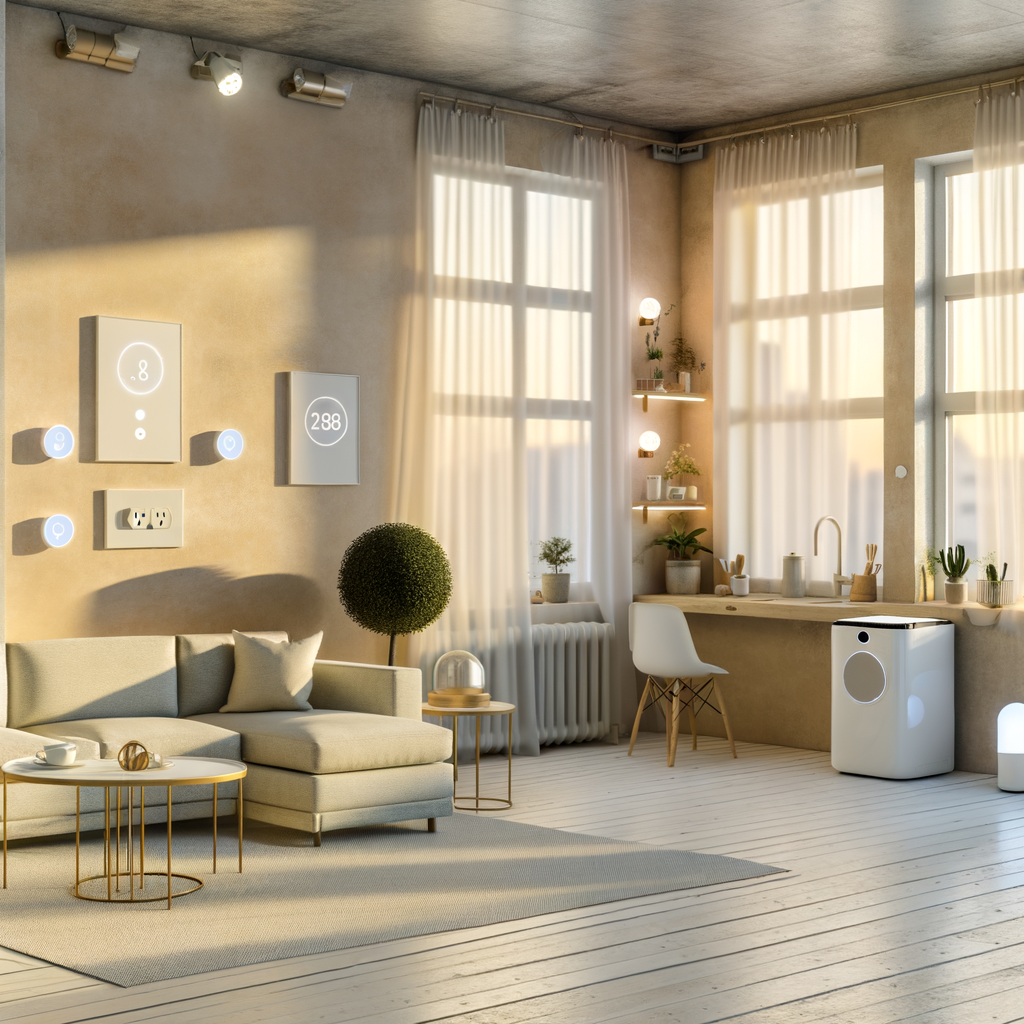Myth-Busting Smart Homes: 7 Common Misconceptions About Eco-Friendly Tech for Renters
Smart home tech isn’t just for Silicon Valley entrepreneurs or wealthy homeowners. It’s rapidly transforming how we live, work, and care for our planet. As a renter, you might have heard a lot of opinions about green technology for your apartment or rental home. But how many of those ideas are really true?
In this post, we’ll shatter the 7 most common myths that hold renters back from embracing eco-friendly smart home solutions. Get ready for practical tips, actionable advice, and the confidence to create your own energy-efficient haven — without breaking your lease or bank account.
Why Should Renters Care About Smart, Eco-Friendly Tech?
There are big benefits for renters who adopt green smart home devices:
- Save money on utility bills
- Reduce your carbon footprint (even in short-term rentals)
- Increase comfort with smart automation
- Boost security and peace of mind
- Take your gear with you when you move
But outdated myths and misconceptions often prevent renters from taking the first step. Let’s clear those up, one by one!
Myth #1: “You Can’t Use Smart Tech in a Rental”
The Truth: Most Smart Devices Are Plug-and-Play
Landlords are (rightly) cautious about anything that involves drilling, rewiring, or permanent changes to their property. Thankfully, most modern smart devices are designed to be:
- Wireless and easily removable
- Zero-damage (install with adhesive, suction, or simple plugs)
- Portable (move them to your next rental with ease)
Actionable Advice
- Look for smart light bulbs instead of hardwired smart switches.
- Choose Wi-Fi smart plugs to automate lamps or appliances.
- Opt for contact or window sensors with removable adhesive.
- If in doubt, ask your landlord — many welcome energy-saving upgrades.
Bottom line: There’s a whole world of “renter-friendly” smart tech that requires no landlord approval or permanent installation.
Myth #2: “Smart Home Tech Is Too Expensive”
The Truth: Entry-Level, Eco-Friendly Gadgets Start Under $20
Smart home automation used to be premium tech, but not anymore. Prices have tumbled, putting devices in reach for almost any budget:
- Smart bulbs: $10–$20 each
- Smart plugs: $15–$30 for a pack of 2
- Entry-level sensors and controllers: often under $30
Plus, energy savings quickly offset small upfront costs. Consider this:
- A smart plug can slash “vampire” power drain from electronics — potentially saving $50+ per year.
- Smart thermostats (when allowed) cut heating/cooling costs by up to 23% according to the EPA.
Actionable Advice
- Start with one device (like a smart plug for your coffee maker or lamp).
- Watch for bundle deals or sales on smart kits.
- Calculate simple ROI — most renters see payback within months.
Fact: Green smart tech often pays for itself.
Myth #3: “Landlords Don’t Allow Any Tech Upgrades”
The Truth: Most Eco Tech Is Welcome — and Can Even Add Value
Many landlords appreciate upgrades that reduce unit wear-and-tear, decrease fire risks, or attract eco-conscious tenants. Some are even eligible for insurance discounts or local green incentives.
- Battery-powered smart devices are not modifications and do not need approval.
- Stick-on sensors, smart bulbs, and plugs can be removed without a trace.
- Portable air purifiers, thermostats (if plug-in), and energy monitors are universally accepted.
Actionable Advice
- Communicate with your landlord before making any changes that require tools.
- Offer to restore everything to “move-in” condition when you leave.
- Highlight how smart eco tech saves them money (like on water or electricity bills in inclusive rentals).
You might be surprised how open your landlord is to win-win technology — especially green solutions.
Myth #4: “Smart Tech Is Difficult To Install and Use”
The Truth: Most Devices Are Designed for Beginners
Smart home platforms have gotten far more user-friendly. Setups are typically:
- App-based with guided step-by-step instructions
- As simple as screwing in a bulb or plugging into an outlet
- No technical or wiring experience required
Actionable Advice
- Check compatibility: Use devices that work with Google Assistant, Amazon Alexa, or Apple HomeKit if you already use these platforms.
- Check Wi-Fi strength at outlets/rooms for reliable connections.
- Review online video tutorials for easy visual guidance.
If you can use a smartphone, you can set up most smart home tech in minutes.
Myth #5: “Smart Devices Aren’t Eco-Friendly”
The Truth: Green Smart Tech Slashes Energy Waste
Not all tech is green — but well-chosen smart devices make a huge eco difference. Here’s how:
- Plugs and power strips cut off standby power drain (aka “phantom load”).
- Smart lighting ensures lights are only on when you need them.
- Thermostats & smart fans intelligently adjust heating/cooling for you.
- Leak sensors stop water waste.
- Usage monitors spotlight your biggest energy drains to target improvements.
Actionable Advice
- Look for products with ENERGY STAR, RoHS, or similar eco certifications.
- Automate schedules to power down devices when you’re at work or asleep.
- Replace power-hungry bulbs with LED smart bulbs.
Small steps add up: Even a single smart switch can prevent tons of wasted power over its lifetime.
Myth #6: “Eco-Friendly Tech Means Giving Up Comfort or Style”
The Truth: Today’s Smart Devices Are Sleek and Enhance Your Living Space
Forget clunky beige boxes and clashing control panels. Today’s leading smart home gadgets come in elegant designs that blend with any décor. Even better, smart automation makes daily life easier, not harder:
- Smart air quality monitors keep your space healthy 24/7.
- Smart curtains or blinds open/close with sunrise or at your voice command.
- Color-changing LED bulbs set the mood for movie night, reading, or relaxation — all from your phone.
Actionable Advice
- Prioritize devices with customizable settings for lighting, schedules, and scenes.
- Explore brands offering multiple color choices or minimalist designs.
- Utilize automation for cozy comfort — like pre-warming a room before you wake up.
No more sacrifice: Eco-friendly and stylish can (finally!) go hand




